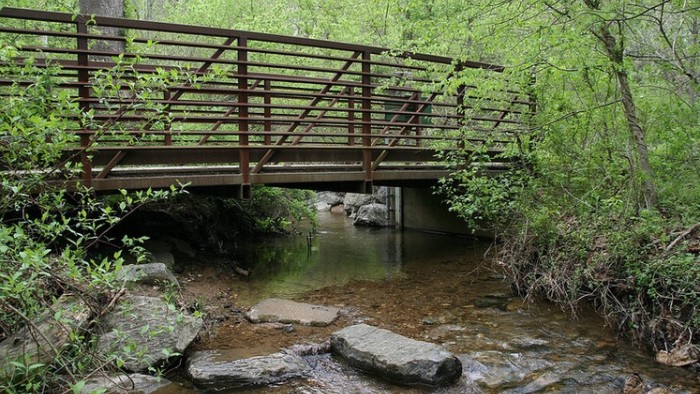USDA NRCS Provides Startup Capital for Conservation

The Conservation Innovation Grant (CIG) program of the federal Natural Resources Conservation Service (NRCS) stands out as a valuable tool for innovative conservation projects to gain access to startup capital and to meet the demand for private investment on working lands. In June 2017, NRCS announced a new cohort of CIG awardees in the Conservation Finance category with a total of $8.8 million in funding across 11 projects.
In our interview with Kari Cohen, director of the Conservation Innovations Team at NRCS, CFN sought to get Cohen’s perspective on the newly funded CIG projects. We asked about his outlook on how NRCS and the CIG program will continue contributing to the conservation finance field.
The answers below have been edited for clarity and brevity.
CFN: What were the priorities that NRCS sought in evaluating this round of CIG conservation finance applicants?
Cohen: This is the third year the CIG program has had conservation finance as a category. Each year, NRCS refined the funding announcement as we learned more about the types of projects we wanted to fund. We were looking for a broad swath of project types representing various sectors of agriculture and natural resources as well as different components of the conservation finance sector.
CFN: How would you characterize the market barriers to conservation finance that NRCS aims to address through CIG funding?
Cohen: NRCS’s key goal is to provide seed funding to allow for proof-of-concept pilot and demonstration projects. When it comes to impact investments, nobody is going to invest in the first pilot effort of a new financial vehicle; it takes some grant funding to get things off the ground.
A lot of the CIG projects just are not going to happen without grant funding, given they are in their initial stage where nobody is expecting [financial] returns from these projects. Because NRCS is not expecting financial returns on its “investment” through CIGs, putting this grant money out there allows the CIG awardees to take reasonable risks and do things they otherwise would not be able to do.
CFN: What challenges do you think the CIG recipients face in implementing their work?
Cohen: It is the first time people are trying to do these types of projects. Take, for example, the Chesapeake Bay Foundation and i2 Capital pay-for-success schemes or the Climate Trust Environmental Price Assurance Facility. If they are successful, the opportunities for scale and impact across the country are tremendous. But these concepts face all the challenges of getting something new off the ground, such as getting partnerships together, working with private landowners on new projects, and building financial vehicles.
CFN: What projects are you particularly excited about in this round of funding?
Cohen: The Climate Trust’s Environmental Price Assurance Facility could kick-start not just greenhouse gas market credits, but also a larger financial structure that allows folks to buy and sell environmental credits at the most efficient price point. It is modeled on a similar facility put together by the World Bank in the global context and has real promise for environmental markets in the United States.
The Maine Organic Farmers and Gardeners Association is trying to integrate conservation into farm mortgages. For example, implementing conservation on your land makes you eligible for a lower interest rate. Farmers can then take the difference and apply it to conservation activities. The scale is quite immense if you think of how many farmers use farm operating loans, as almost all of them do. Integrating conservation into traditional financial vehicles like this is a huge opportunity.
CFN: How do you describe the role of NRCS in providing funding for early conservation finance project models such as the CIG recipients?
Cohen: NRCS offers a substantial amount of funding for early-stage projects, which occupies a unique niche that others are not doing. For example, foundations tend to focus more on the next stages of things that have already been proven to be successful. There aren’t many people out there doing the high-risk capital that NRCS does, which is why the funding is so coveted and valuable.
CFN: Are you seeing scalability in CIG projects?
Cohen: It is a little early. We have been funding the Conservation Finance CIG category since 2015. Many of those projects are still ongoing. One clear example of an early success is the Climate Trust’s Climate Trust Capital project, which was established with the help of the Climate Trust’s 2015 CIG award. The Climate Trust was able to leverage the CIG funding to secure a substantial investment from The David and Lucile Packard Foundation.
CFN: Do you think there is the potential or need for follow-on funding and support for successful CIG projects?
Cohen: There is a real desire for identifying mezzanine capital if a CIG project has been successful. NRCS is brainstorming ideas for how to best do this. Is there some way for NRCS to provide larger grants or co-invest in projects? Can we provide B-level funding for successful CIG projects? We are working through some of these ideas now.
CFN: Do you have any reflections on the first round of conservation finance CIG projects funded in 2015 – especially now that they’re three years down the road?
Cohen: Our first year of conservation finance CIG funding was a little tricky because it was the first time we funded that specific category and both NRCS and many applicants were kind of feeling around in the dark. None of the 2015 projects have finished yet and many will likely request extensions to complete their work.
The Partners for Western Conservation sage grouse credit project will be a winner – their team was just able to leverage the CIG project to complete an initial transaction with a mining company. The greenhouse gas-market-related projects continue to struggle overall because the policy environment continues to be so uncertain.
A major highlight from the 2015 cohort is the development of the Conservation Finance Practitioners Roundtable community of practice – seeing it grow, take form, and harness the passion of the conservation finance community.
CFN: How does the CIG program fit into NRCS’s larger strategy of implementing conservation finance?
Cohen: NRCS’s goal is to develop funding sources and new income streams that complement NRCS’s Farm Bill programs. NRCS is now looking internally at how to incorporate the principles of conservation finance learned from CIG programs into our own Farm Bill programs. Encourage Capital issued a report earlier in September 2017 that explored ways NRCS could better leverage private capital in our Farm Bill programs beyond CIG.
CFN: What is the outlook for the CIG program – specifically, the conservation finance category?
Cohen: The CIG program has been an amazing vehicle to support emerging strategies in market-based conservation. Leadership seems to really value the program for its ability to support emerging approaches, though how we may do that is an open question. And of course, speaking of the program as a whole, we will need to see if CIG is reauthorized in the next Farm Bill.
The full list of 2017 Conservation Finance CIG awardees includes:
The Climate Trust - Environmental Price Assurance Facility
$904,000
The Climate Trust proposes to develop and launch the Environmental Price Assurance Facility to serve as a buyer-of-last-resort for credits to help mitigate risks associated with the future value of environmental credits.
The Nature Conservancy - Leveraging Water Markets to Secure Water for Nature and Agriculture
$1,869,439
The California chapter of The Nature Conservancy is pioneering two initiatives that use a novel combination of data analytics and water markets to meet freshwater conservation goals and improve the overall management and drought resiliency of California water resources.
Trout Unlimited: Liquid Assets Project - Mobilizing Impact Investment Capital for Agricultural Water Sustainability
$1,430,000
Trout Unlimited proposes to develop and pilot a series of impact investment opportunities in the Colorado River Basin, improving agricultural water sustainability and providing financial returns to investors and agricultural producers.
National Audubon Society - Development of Self-Sustaining Markets for Bird-Friendly Beef to Incentivize Grassland Conservation on Private Lands Across the Great Plains
$1,498,000
National Audubon Society proposes to fully develop the supply chains of its Audubon Conservation Ranching program to provide ranchers with access to premium beef markets, creating the first scalable self-sustaining model for a linked network of ranchers and consumers of bird-friendly beef.
Texas Parks & Wildlife Foundation - The Gulf Coast Conservation Revolving Loan Fund: Harnessing Private Philanthropy to Achieve Transformative Land Conservation on the Texas Gulf Coast
$289,922
The Texas Parks and Wildlife Foundation proposes to establish the Gulf Coast Conservation Revolving Loan Fund to support efforts to maximize Deepwater Horizon oil spill mitigation funding by leveraging private investment for public and working lands conservation along the Texas Gulf Coast.
The Conservation Fund - Pathways for Producers in Metro Atlanta Region: Unlocking Capital and Resources to Conserve and Transform Local Food Systems
$154,278
The Conservation Fund proposes to create an Agriculture Conservation Fund with an initial target of $5 million in impact capital to accelerate the pace of working lands conservation in the 23-county region surrounding Atlanta.
The Nature Conservancy - Drain Infrastructure Transactions for Clean H2O
$328,077
The Nature Conservancy proposes to create a novel conservation delivery and funding approach to realize new financial benefits from the adoption of conservation practices through modified drain assessments in the Great Lakes region.
Maine Organic Farmers and Gardeners Association - Integrated Investment Incentives for Conservation Program
$603,000
The Maine Organic Farmers and Gardeners Association proposes to promote natural resources protection through the development of specialized loan products to stimulate and reward conservation practices.
Delta Institute - Financing Regenerative Agriculture: Innovative Mechanisms
$502,400
The Delta Institute proposes to create innovative mechanisms to help investors operationalize and scale investments in regenerative agriculture in Wisconsin. This is a system of holistic practices that promote soil health and restore ecosystem services while maintaining yield.
Chesapeake Bay Foundation - PA “Offset Partnerships”: Bringing Pay for Success Models to Agricultural Conservation and Stormwater Compliance
$415,341
The Chesapeake Bay Foundation proposes to demonstrate the feasibility and cost-effectiveness of using a pay-for-success approach to attract new streams of capital to implement conservation practices on agricultural lands in York and Lancaster counties in Pennsylvania.
I2 Capital: Brandywine Christina Water Fund Pay for Success Mechanism
$804,672
I2 Capital proposes to develop a pay-for-success approach to attract private impact capital to support the implementation of the Water Fund, in which upfront investments in conservation practices on farms in the Brandywine Christina Watershed in Delaware and Pennsylvania will be repaid by downstream beneficiaries (e.g., utilities and municipalities) after achievement of pre-determined environmental outcomes.
Note: This article describes a grant program that currently supports Conservation Finance Network. The Conservation Fund is a partner of CFN's. The Nature Conservancy has donated to CFN.
To comment on this article, please post in our LinkedIn group, contact us on Twitter, or email the author via our contact form.
